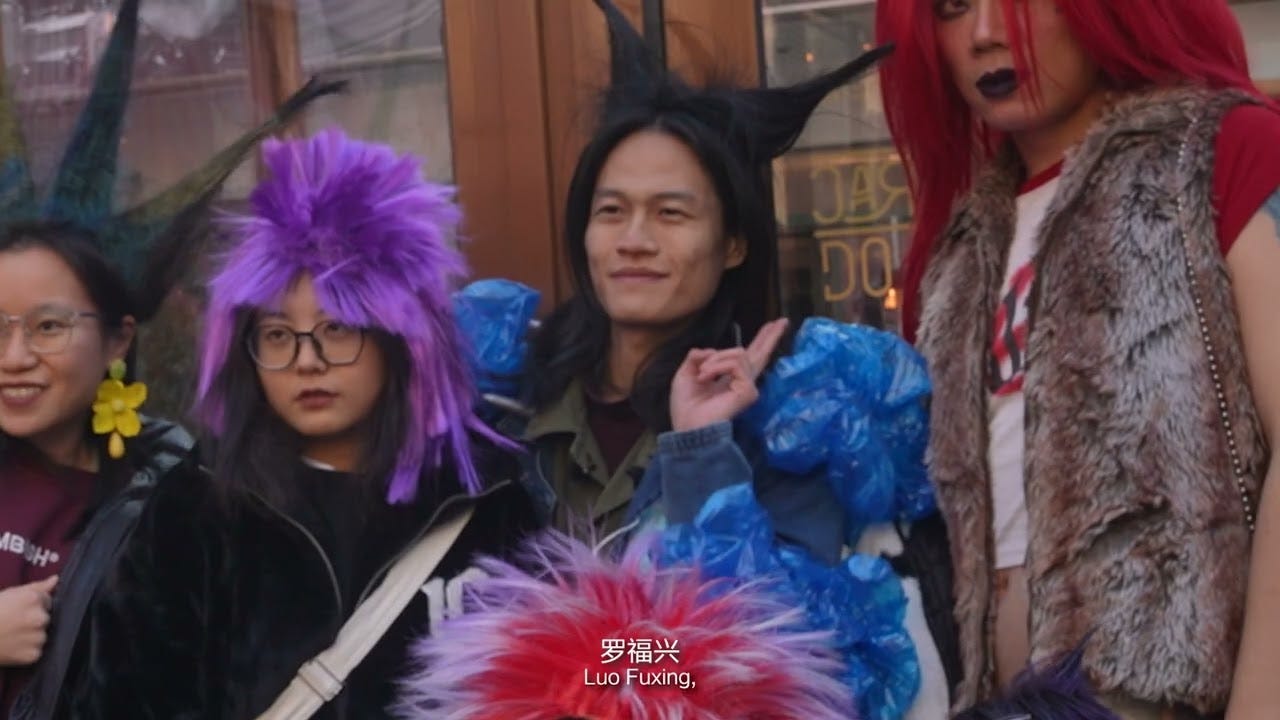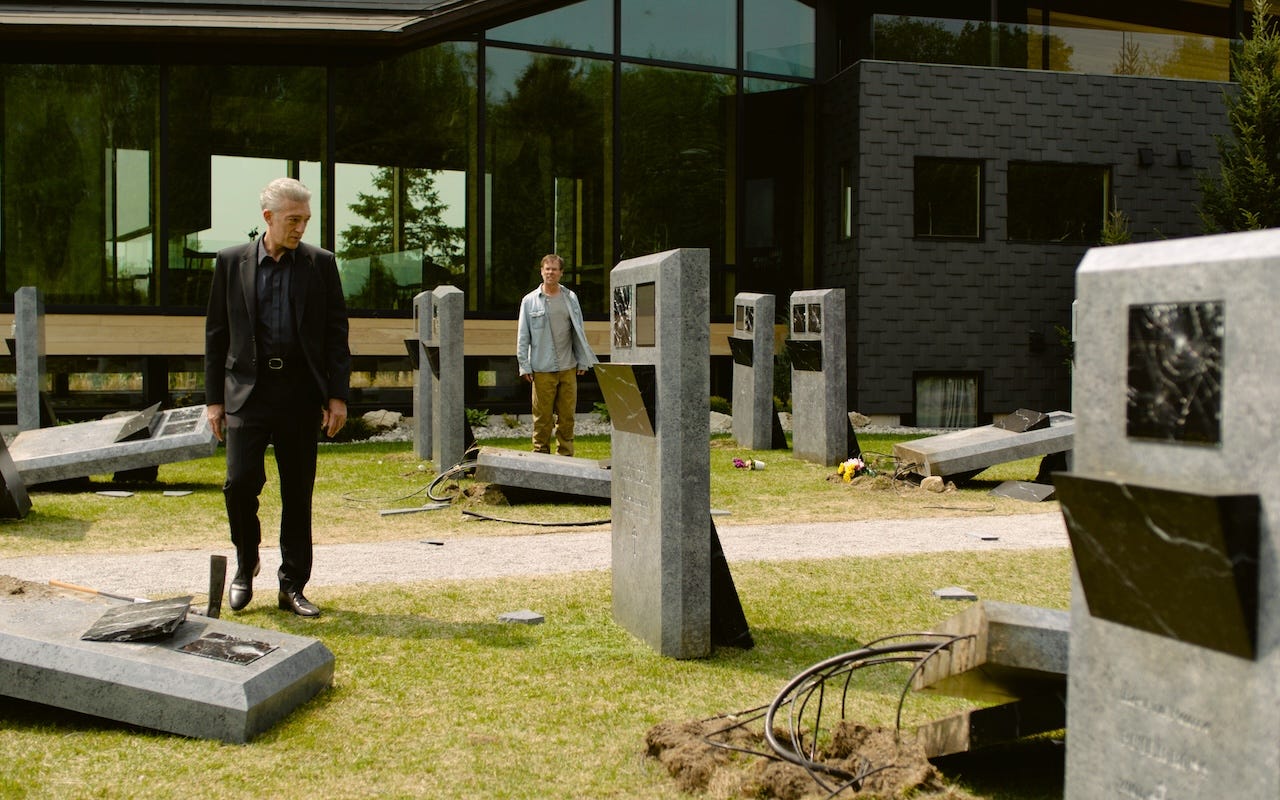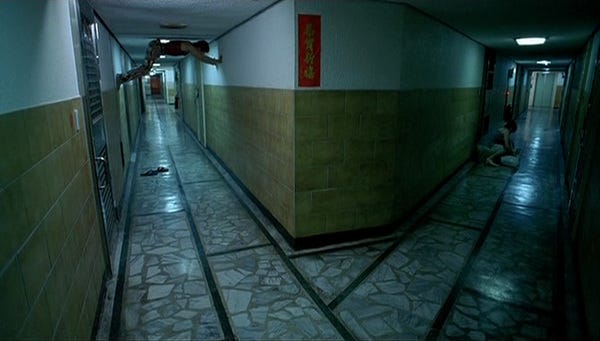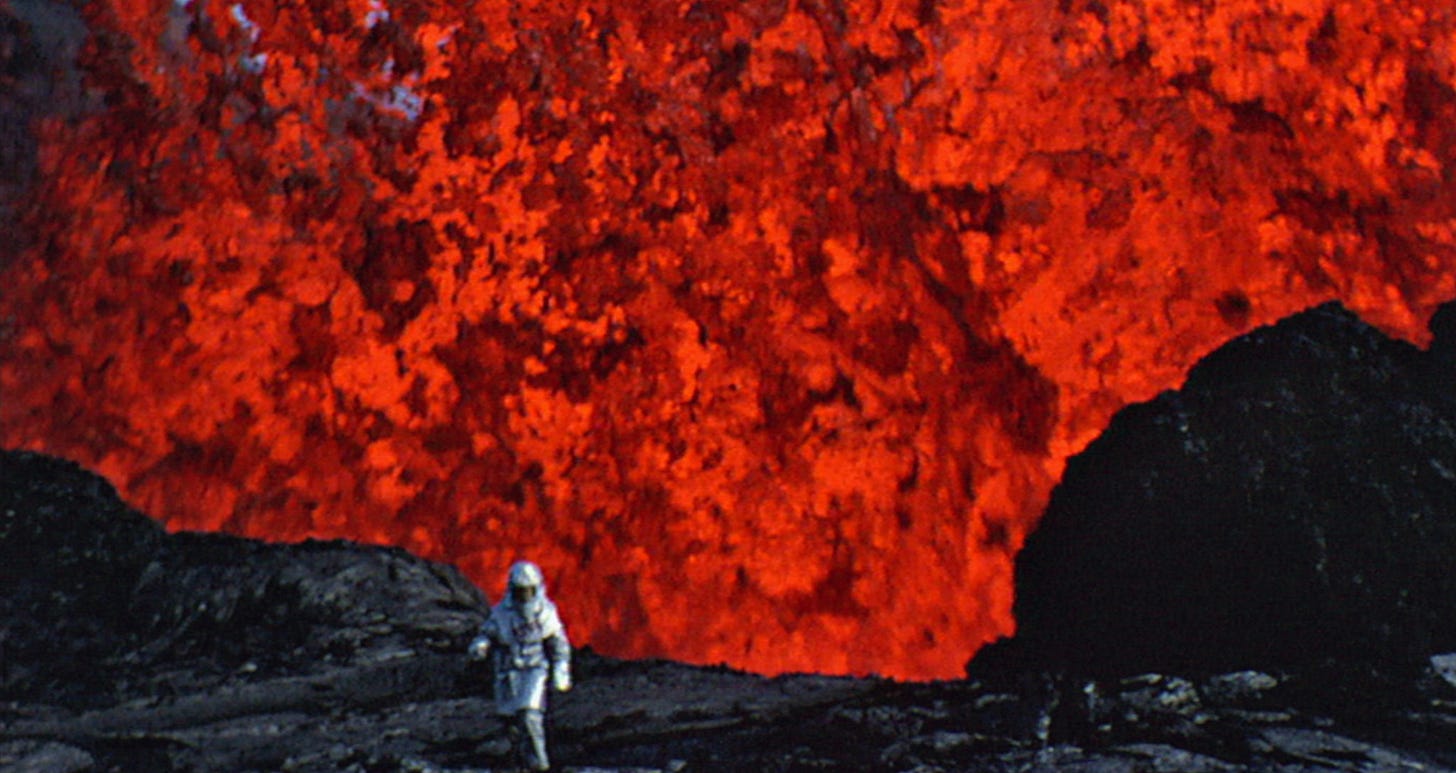Films: May & June 2025
Sheffield DocFest, recent UK releases, East Asian urban melancholy, Werner Herzog's documentaries, and more
Hello! I’ve been watching some really interesting films recently. Some good films, too — but lately I’ve seen a lot of things I haven’t loved, but have felt significant in some way, so I thought I would collect my thoughts here.
Recently, I’ve been having some health troubles, and I also started my dissertation for my MA (which mercifully won’t be a big essay, but instead a sizeable chunk of a science-fiction novel I’m writing.) So, when I can, I’ve been immersing myself in stories and documentaries; sometimes for distraction, sometimes inspiration.
Sheffield DocFest
I visited Sheffield for the first time last weekend; me and my partner had tickets for Sheffield DocFest. If you don’t know it, it’s an international documentary film festival, with screenings happening in loads of different cinemas around the city.

The first film we watched was Kanehsatake, 270 Years of Resistance (1993). I’m so glad I caught this, because it’s an incredible documentary, and it was the standout for me.
Alanis Obomsawin documented a dispute over a proposed golf course being built on Mohawk lands, near Oka, Quebec in 1990. ‘Dispute’ is far too sanitised a word for what this is, though — the Mohawk people, whom have already had so much of their land stolen, are forced to resist the police and military’s violent encroachment and escalation of conflict: a full-on siege.
This brutal continuation of colonisation is hard to watch, but it’s necessary viewing. I felt so much sadness and anger throughout, but more than that, utter awe and respect for the Mohawk people resisting state violence. And not just from the Canadian authorities, but facing horrific violence from the white residents of Oka, too, who rioted and pelted the community with rocks and trash on numerous occasions.
I’m glad for the perspective and voice to indigenous people this documentary gives. It’s bitterly pathetic that this all happened because rich white men want to expand their golf course. Abolish golf. I’m serious.
We also watched the world premiere of Rock Out (2025) which asks the question if there is, or ever was, a place for queer people in rock-and-roll. There was a personal thread from the filmmaker that ran throughout, and I found that affecting, but ultimately this doc spent way too much time on mainstream bands like The Beatles and their closeted manager, and overlooked people or groups I’d consider to be more relevant queer, punk icons.
The next day we saw Criaturas da Mente (Creatures of the Mind, 2024) which I was excited to see, because it’s all about dreams and accessing the unconscious from a neuroscientific perspective.
The filmmaker draws some interesting connections between the beliefs and ancestral knowledge of people in Brazil (particularly those of African ancestry), dancing as a way to access the subconscious, and also indigenous uses of hallucinogens, but I felt that it skimmed the surface of all these topics without going very deep.
There was a little bit about octopuses and scientists researching their dreams, but that was skimmed over too — I wanted to know more! However, I found a copy of ‘eco-dystopian thriller’, The Mountain in the Sea by Ray Nayler in a bookshop in Sheffield, which I’d been thinking of reading for a while. Although it’s science-fiction, it delves into ideas to do with cephalopods' intelligence and communication. I started it and I’m enjoying it a lot so far.
Finally, we watched Assembly Line Fashionista (2025) which follows Luo Fuxing, who is known as the ‘father’ of 杀马特 — Shamate, or Smart — an alternative subculture in China where people use backcombing and product to shape their hair into wild, pointy styles. I really liked this; the director Xue Zhu follows Luo from city to city as he follows the gigs and opportunities, and their friendship gives a nice intimacy to the film.
Luo is likeable, and sort of eccentric; even described as an ‘alien’ by his girlfriend. She pleads with him: Can you try to be normal? as he shuffles around freezing-cold Beijing in shorts and sliders. He might be the most laid-back guy I’ve ever seen, and seems to get by on being able to adapt and take any opportunity that comes his way. His livestreams, one source of income, are frequently banned by the Chinese government for ‘hairstyle violations’.
It was a really charming watch, especially when a bunch of Shamate youth congregate in the street to promote Luo’s upcoming theatre role, catching looks that range from excitement and wonder to pure disapproval from passers-by.
There is another documentary about Luo Fuxing called We Were Smart from 2019, and Yifan Li, the director, makes a supportive appearance in Assembly Line Fashionista. From reading about it, We Were Smart seems to have more of a focus on the working-class background of the youth that formed Shamate (Luo is a former factory worker, as were most members of the subculture in its early days) so I’m adding this to my watchlist.
Recent releases
In June I managed to catch three films I’d been anticipating for a while: 28 Years Later, Cronenberg’s The Shrouds, and Tornado.
I was so excited to watch 28 Years Later, firstly because I love a dystopia, but mainly because it was set (and largely shot) where I’m from, in Northumberland!
In 28 Years, the survivors of the ‘rage virus’ outbreak decades prior have formed a kind of medieval, patriarchal village society on Holy Island (a.k.a. Lindisfarne) which is separated from the mainland by a tidal causeway.
There were things I liked about the film (I especially enjoyed Ralph Fiennes’ performance) but some of the writing choices — dialogue and plot, mostly — fell flat for me, and I found myself imagining what I would have done differently had I been handed the sequel’s script. Lol, so big-headed — maybe I’ll write some zombie fanfiction once my deadlines are out of the way.
Being from the North East both added and took away from the viewing experience, I think. The immersion was broken by the geographical impossibility of some parts (going from the Angel of the North to Sycamore Gap to Rothbury on foot, in less than a day? Naw.) and the hammy Geordie accents from Taylor-Johnson and Comer were a bit dodgy at times. But that’s just me being annoying and Northumbrian; to a wider viewership I don’t think these details matter.
I really enjoyed seeing the digitally altered shots of an abandoned, rewilded Northumberland. And it was brilliant to see it at Forum Cinema in Hexham, where my partner (the programmer there) introduced. There was a raffle for those who could name the different filming locations in the area, and everyone in the packed screen gave a moan of fondness and anguish when the Sycamore Gap tree appeared on screen (R.I.P.)
I want to mention The Shrouds, because I’m a Cronenberg fan, but as I write this, I still struggle to form what I thought of it, even having sat with it for a while. It’s a strange one, even for him; tonally baffling at times, but there are plenty of the weird and kinky moments he’s known for. It’s undoubtedly a film about grief, but it’s also one of his funnier films. It’s definitely interesting to see Cronenberg’s take on data surveillance, AI and Teslas. I need to rewatch it, I think.

Tornado was described to me as a samurai western set in 1700s Scotland, so I was immediately interested. A young woman and her father have a travelling, samurai-themed puppet show; when they are threatened by a roaming gang of wrong’uns, things start to unravel and the revenge narrative ensues. This was atmospheric, moody, and there were some excellent kills. Loved the costuming and designs of the travelling carts, too. I’ve seen people on Letterboxd call this film both ‘boring’ and ‘confusing’, but I didn’t think it was either! I thought it was cool.
Urban melancholy in East Asian cinema
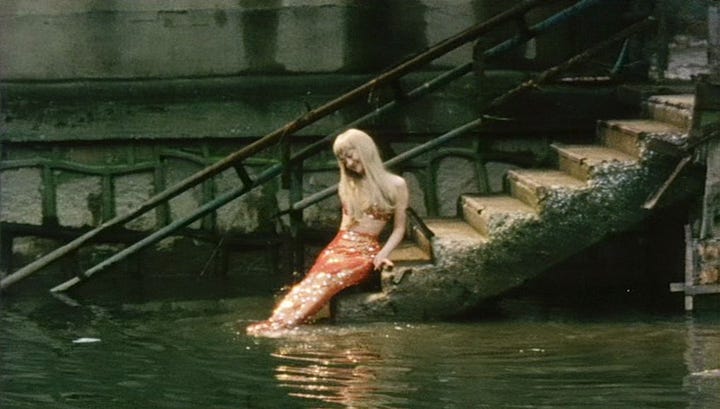
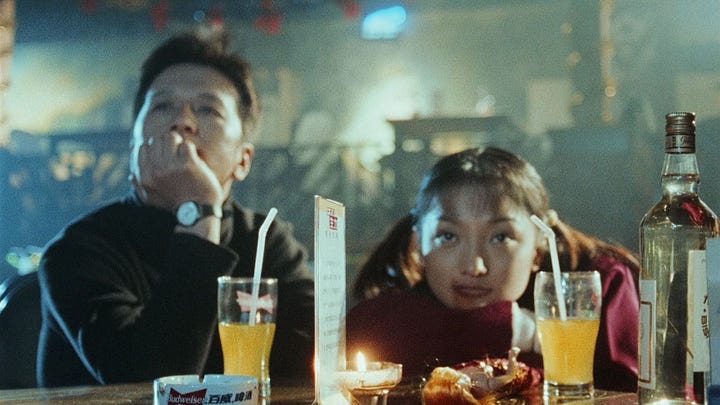
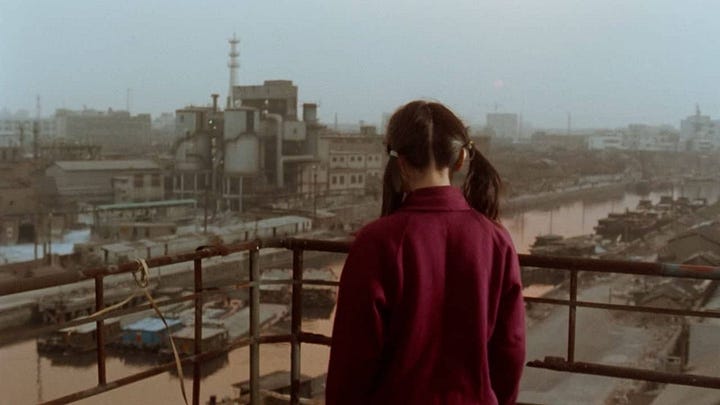
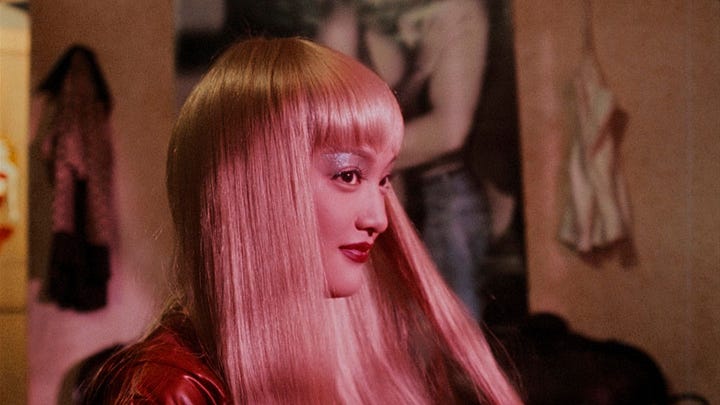
Last night I watched Suzhou River (2000). I had seen some stills from it online, and its setting and aesthetic is what intrigued me, really. The film is set along Shanghai’s Suzhou River, polluted with years of industrial runoff from the surrounding factories and warehouses. My current work-in-progress is also set in the watery, industrial part of a city, and I want to capture that grimy, neon-lit, melancholic feeling that so many Chinese directors do so well. I didn’t love Suzhou River, but there was so much to appreciate about it visually.
I recently watched The Wayward Cloud (2005), a Taiwanese film set in Taipei during a water shortage crisis. It’s the summer, watermelons have become cheaper than water, and as a result everyone is constantly lugging the fruit through parched streets, or chugging the juice when they get back to their apartments. The scene opens with a porn shoot, where a halved watermelon is utilised in creative ways — I loved this.
There are a great deal of shots of the characters lounging in tiled hallways with fluorescent lighting, the cramped shelves of erotic video stores, and traipsing underground concrete walkways. There’s a listlessness and a slow pace to the film, which I liked. Peppered in amongst this, there are surreal, musical dance numbers, which come out of nowhere like mania.
(spoilers, trigger warning)
I enjoyed all of this stuff a lot; in fact, I enjoyed the whole film up until the last half hour, where there was a prolonged, very graphic sexual assault scene, which shocked me, to be honest. On reflection, I don’t understand why the scene needed to be so gruelling and explicit — it read as misogynistic to me. So, a heads up if you watch The Wayward Cloud — I haven’t seen many people talk about the ending, which is bananas to me, because it’s genuinely one of the most disturbing things I’ve watched, and is a jarring departure from the tone of the rest of the film.
(end of spoilers)
Werner Herzog, fire and landscapes
As part of my research, I have also been revisiting Werner Herzog’s various documentaries, as one of my story’s main characters is a documentary filmmaker. I watched Lessons in Darkness (1992) for the first time this month.
The film has minimal narration, and shows the ravaged oil fields of Kuwait in the aftermath of the Gulf War. Here is a landscape completely corrupted, with unceasing torrents of fire and black smoke: the evil of Western imperialism and greed incarnate. It’s sickening to see what humans can do to a place. There is a helicopter shot of what appears to be a vast lake, until Herzog tells us it’s only masquerading as water: it’s all oil. The opening shots show bleached bones and crumbling buildings in the desert. I think about the people who used to live in this landscape. It’s bleak.
Side note: I also recently watched Jonathan Demme’s remake of The Manchurian Candidate (2004), a neo-noir, psychological thriller which I didn’t expect to love so much! This version takes place after the Gulf War, which is why I mention it. Denzel Washington is incredible: his brooding explodes into frenzied paranoia as he’s hounded by jumbled memories and a vast political conspiracy.
Herzog’s 2016 film Into the Inferno is also mesmerising, but offers more in way of the human spirit. Herzog has a cute, mentor-y friendship with a volcanologist called Clive Oppenheimer, and together they explore active volcanoes across the world. There’s some amazing footage of magma and explosions, but what I really like about the film is the exploration of how different cultures are informed by the volcanoes near to them.
Herzog says "there is no single [volcano] that is not connected to a belief system." As we watch scientists on the lip of volcanoes almost succumbing to frostbite, or dodging projectiles from the magma within, we see that their research is a kind of belief system, too.




